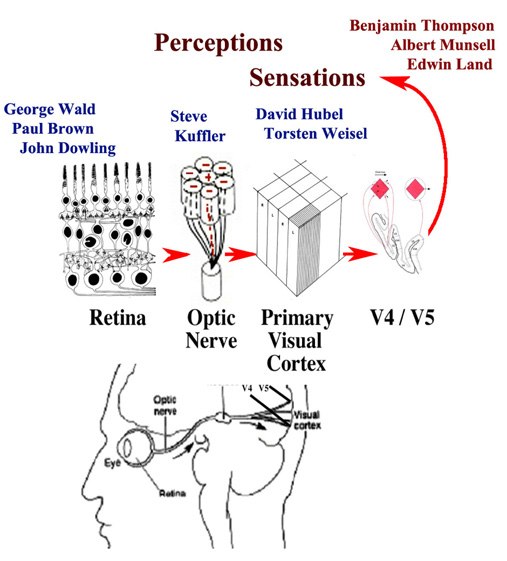Color Science in Boston

In the 22 years of the IS&T Color Imaging Conference, this is the first time we meet in Boston. The history begins with Benjamin Thompson’s (Count Rumford's) study of complementary colors in 1793. The history includes the experiments of Oliver Wendell Homes, William James, Leonard Troland, Alfred Munsell, Smittie Stevens, George Wald, Paul Brown, John Dowling, Edwin Land, David Hubel, Torsten Wiesel, Bevil Conway and many more. The talk will trace the many connections between physics, psychology, spectroscope, photography, and color that have roots in Boston.
There is a rich history of Bostonians who studied color vision. It covers more than 200 years. This paper is a review of the people from Boston that were fascinated by human color vision, their experiments, their transitional papers, their scientific instruments they invented, and industries they founded. There is the accompanying website that provides a copy of the illustrations used in CIC22 talk. [1]
A side view of the human visual pathway from the lens, retina, optic nerve, to the primary visual cortex at the back of the head. From there the pathway radiates from posterior to anterior. Above the pathway are diagrams of the organization of neurons. Wald, Brown and Dowling taught us about the photochemistry, cone sensitivities, and organization of the retina. Kuffler discovered that ganglion cells are spatial image processors. Hubel and Wiesel mapped the binocular, spatial, and orientation mechanism of the primary visual cortex. While the absorption of light is the first step in the neurobiology of vision, color appearance is the end of the process. Thompson, Munsell and Land studied the sensations generated by the entire visual system.
